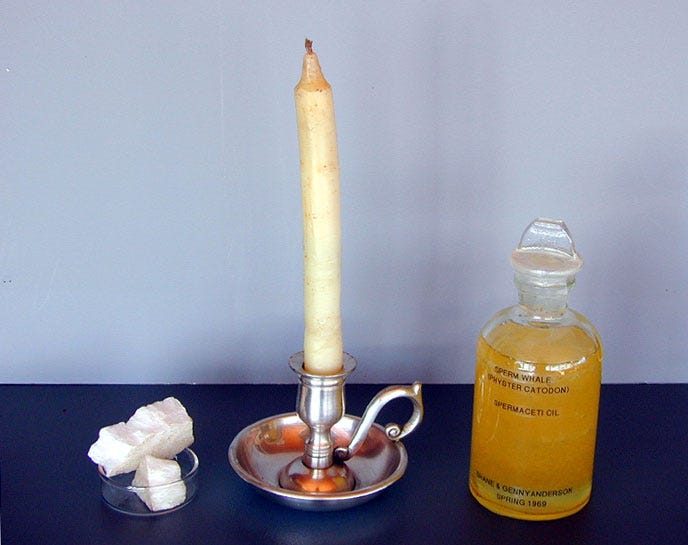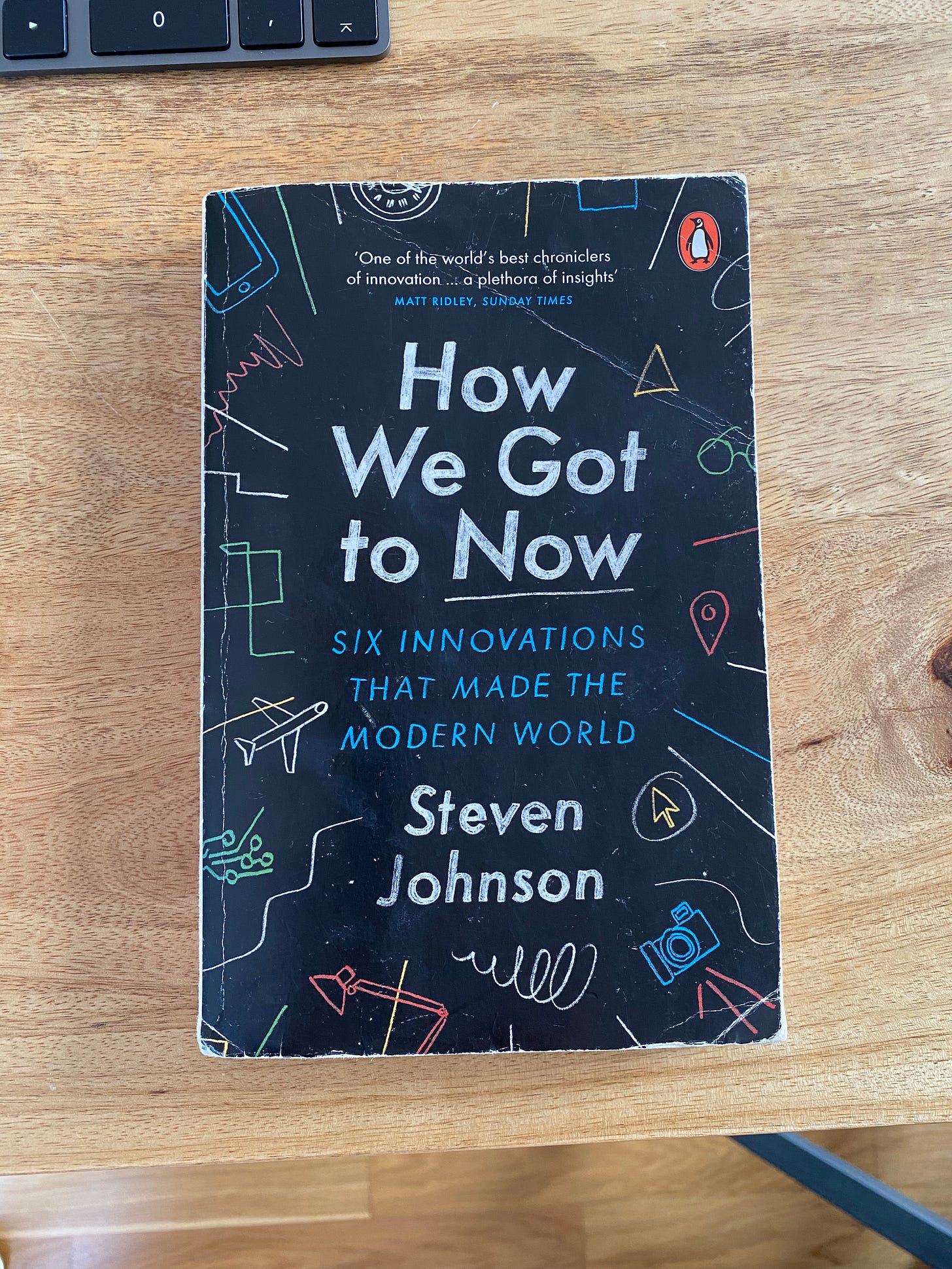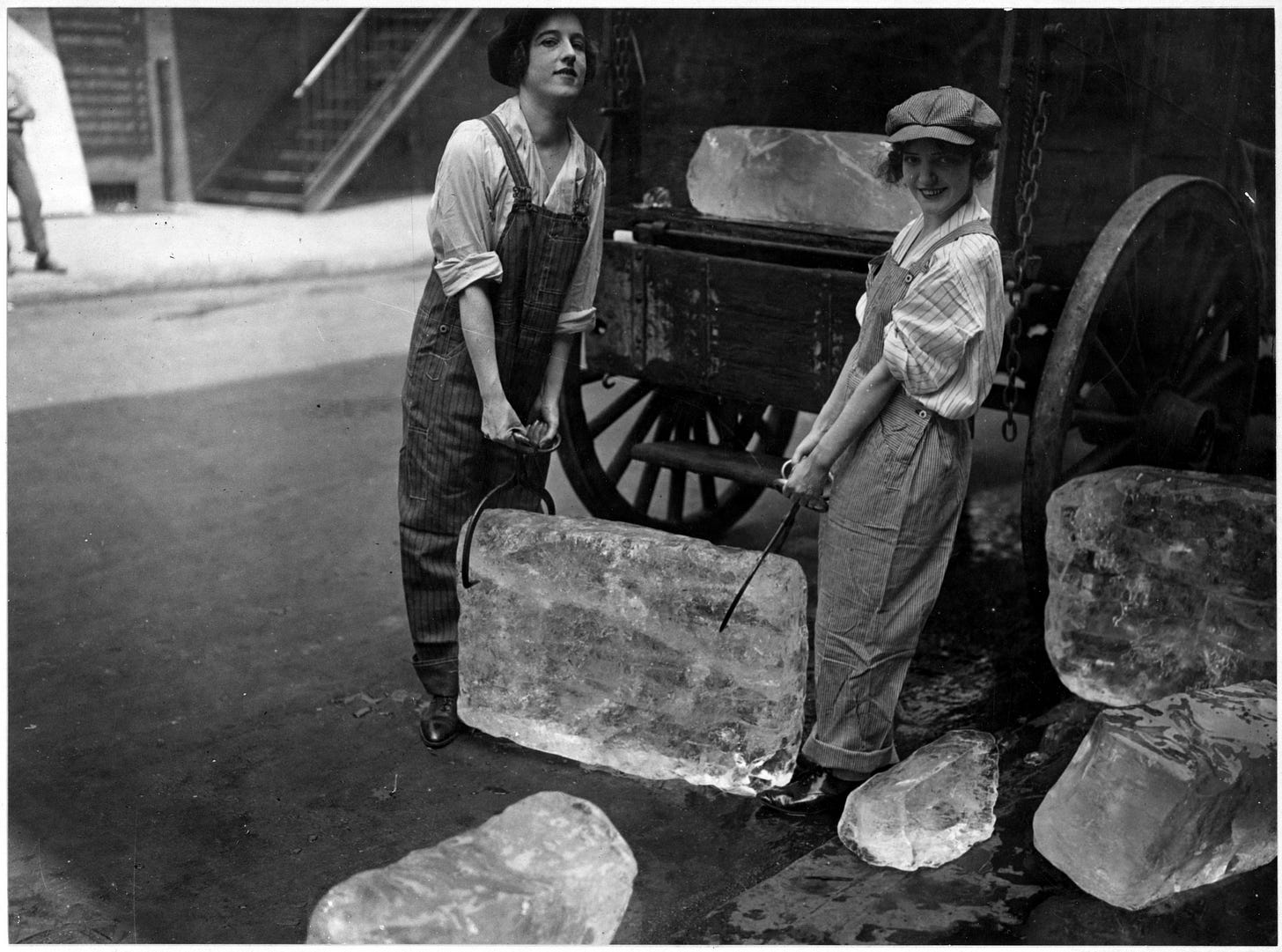Book Review: "How We Got to Now - Six Innovations That Made The Modern World"
What I read and if I would recommend it
What I read
From time to time I get asked what books I’d recommend. I’m therefore starting an (infrequent) series about some of my latest reads - in and outside the field of investing.
You probably became aware of this Substack for its long form business model breakdowns like:
In contrast, the book reviews will be rather short and not contain too many spoilers. To learn more about the investment fund I advise or access my annual letters to investors you can click the button below.
"How We Got to Now - Six Innovations That Made The Modern World" by Steven Johnson
The last book I read was “How We Got to Now” by Steven Johnson.
The book traces down the origins of several technological innovations (like artificial light or refrigeration) over the past 300 years that have shaped our modern world.
It showcases many interesting accidental advancements in the history of innovation. Take e.g. English scientist Robert Boyle, who in 1659 placed a bird in a jar, sucked out the air with a vacuum pump which killed the bird - as Boyle suspected it might - but curiously enough also froze it, which implied that changing the pressure of gases can change their temperature, which in the next step could be useful for refrigeration.
“How We Got to Now” also does a great job demystifying the “light bulb moment” that has come to be synonymous with the heroic stories we like to tell each other about lone geniuses inventing a single thing in a sudden moment of inspiration.
The “light bulb moment” is how we picture Thomas Edison as a young wizard in his lab in Menlo Park in 1879, where he single-handedly comes up with the idea for the electric light bulb, when in fact, more than 23 men had been experimenting with light bulbs decades before Edison even turned his mind to it. What Edison rightfully gets a lot of credit for, was his R&D process, his marketing chuzpe etc. However, the story of an isolated genius coming up with an idea no one else could have dreamed of, is the absolute exception, not the rule.
Another thing done well in “How We Got to Now” is that the book highlights a plethora of unintended consequences stemming from every major innovation. While for example it would have been easy to conclude how the printing press would increase the supply of books and therefore drive the demand for spectacles, it would have been harder to anticipate second order effects like more glassmakers tinkering with lenses would eventually lead to microscopes and telescopes changing our fundamental understanding of cell biology and the solar system.
Coming up ex ante with the even more estranged idea that glass as a fragile material could one day be used for its strength qualities (fiberglass) or its ability to send optical signals through cables at higher bandwidth than copper is almost impossible to forecast as a hummingbird effect from an initial ramp up in glass lenses production.
Pages and Length
Before we get to an excerpt of what the book is about and my verdict below, let’s take a brief look at its specifications:
pages: 215
Investment Book: no
language: well articulated and easy to read
time to finish: I read the first half during a 4 hour flight, therefore it should be perfect for a longer round trip or as a book to bring on a short vacation
Excerpt of what the book is about
In total, Steven Johnson writes about six major innovations:
Glass
Cold
Sound
Clean
Time
Light
Especially the chapters about Cold (refrigeration) and Light (the journey from tallow candles to electric light bulbs) stuck with me.
On Light: Imagine you worked in agriculture 300 years ago. In the winter months the sun goes down early in the afternoon followed by fifteen hours of pure darkness. There are no street lights anywhere outside. Neither are there any light bulbs inside your home. The only solution for indoor lighting are candles made from beeswax (affordable only by the rich) or tallow candles made from animal fat (for everyone else) which produce a tolerable flicker but at the cost of a foul smell and thick smoke.
Before the advent of artificial light, some scientists argue that people had radically different sleep patterns during their ancient pitch-black nights: after sunset they’d have a first 4 hours of sleep, followed by waking up to relieve themselves, have sex or meet at the fire place before heading back for an additional 4 hours of “second sleep”.
The invention of the electric light bulb disrupted these ancient sleep patterns as after sunset people now had an array of additional activities to perform like dining out, visiting the theatre or continuing to work in factories. The convention of two distinct sleep periods per night morphed into one single, continuous sleep period:
“The middle-of-the-night insomnia is not, technically speaking, a disorder but rather the body’s natural sleep rhythms asserting themselves over the prescriptions of nineteenth-century convention. Those waking moments at three a.m. are kind of a jet lag caused by artificial light instead of air travel.”
While the flicker of candles had not been strong enough to change our ancient two period sleep pattern, the steady bright glow of 19th century electric lighting did the trick. From 1882 onwards, Thomas Edison’s company powered electric light for the entire Pearl Street district in Lower Manhattan. But long before this and also before the invention of kerosene lamps, there was another (macabre) advance in the quality of indoor lighting around 1750 which involves the skull of a fifty-ton marine mammal.
In case you went to see the movie “Avatar 2: The Way of Water”, you probably remember a scene of a whale hunt where the main purpose of harpooning the large mammal is solely to extract a golden, oily substance from its brain which humans are willing to pay a lot of money for (in the movie for its anti aging effects).
What appears to be far fetched science fiction, has actually been a mundane reality to produce the highest quality (and highest prized) form of artificial light in the 18th century from a liquid, oily substance inside the brain of the sperm whale called “spermaceti”. George Washington estimated he spent more than $15k per year in today’s currency burning down spermaceti candles like the one shown below:

“Extracting spermaceti was almost as difficult as harpooning the whale itself. A hole would be carved in the side of the whale’s head and men would crawl into the cavity above the brain - spending days inside the rotting carcass, scraping spermaceti out of the brain of the beast. It’s remarkable to think that only two hundred years ago, this was the reality of artificial light: if your great-great-great-grandfather wanted to read his book after dark, some poor soul had to crawl around in a whale’s head for an afternoon.”
While you might have already heard of this expensive and cruel source of artificial light (especially if you’re from New England, the center of the historical U.S. whaling industry), the book’s chapter on “Cold”, and the way we arrived at air conditioning units that shrank from the size of a flatbed truck to being able to fit in a window, features the amazing and relatively unknown story of Frederic “The Ice King” Tudor.
It goes like this:
“Other than the occasional glacier, we assume that a block of ice can’t survive longer than an hour in summer heat, much less months. But Frederic Tudor knew from personal experience that a large block of ice could last well into the depths of summer if it was kept out of the sun - or at least it would last through the late spring of New England. And that knowledge would plant the seed of an idea in his mind, an idea that would ultimately cost him his sanity, his fortune, and his freedom - before it made him an immensely wealthy man.”
Young Frederic Tudor became obsessed with the following idea: ice cut from a frozen lake in Boston during winter (nearly worthless), would be priceless if it could be shipped intact to the Caribbean. So in 1806 Tudor loaded a vessel with 80 tons of Boston ice and set course towards Martinique. A local newspaper published a story about Tudor’s maiden ice voyage. Headline: “No joke, ship full of ice sets sail for Martinique.”, subtitled: “Let’s hope this doesn’t prove to be a slippery speculation!”
When the ship arrived in Martinique, the ice had survived the journey in excellent shape. But while everybody contemplated supply side problems when Tudor set sail for his first ice trade venture, “The Ice King’s” ensuing financial disaster stemmed from demand side problems as the residents of the Caribbean had absolutely zero interest in his cold cargo as they had no idea what to do with it:
“The overwhelming majority of humans living in equatorial climes in 1800 would have literally never once experienced anything cold. The idea of frozen water would have been as fanciful to the residents of Martinique as an iPhone.”
Unfortunately, Tudor’s next voyages produced similar bleak results: the ice arrived at its destination in great shape, but almost none of it could be sold because there was no demand. Soon after, Tudor was thrown into debtor’s prison (yes, this was a thing until the mid 19th century). But once he came out, he worked hard to instill a craving for ice cream and cold drinks in residents of the Caribbean and the formation of this habit took ca. 15(!) years, which is when Tudor’s ice trade finally turned its first profit.
Meanwhile, the ice trade also started booming domestically and by 1860 two out of three New York homes had daily deliveries of ice. When Tudor died in 1864, he had become an immensely rich man with a net worth of over $200m in today’s currency.
A less obvious second order effect of Tudor’s ice trade is that it transformed the entire U.S. city-country food system, by allowing fresh foods to be transported from the countryside to the nation’s rapidly growing cities like Chicago. While one was able to send spices around the globe for a long time, slaughtering beef was an entirely local business as it was simply not possible to send fresh meat over long distances without ice cooled refrigerator railcars and later refrigerator ships.
What are my main take-aways from the book?
For me, there are three main take-aways:
In innovation, there’s rarely a “light bulb moment”: Instead it’s almost always a slow hunch of several men and women working independently on solving a problem in what’s adjacently possible.
Just build/ship it and they WON’T come: Frederic Tudor shipped a finished product which initially flopped, as people had no idea what to do with it. The same happens today with visionary product launches all the time.
First order effects are in plain sight, second order effects are harder to see and third order effects are almost impossible to forecast ex ante. Transferring this to investing: While e.g. one could have seen how Ford’s mass production of affordable cars would lead to the creation of automobile-friendly U.S. suburbs with single-family houses, it would have been harder to forecast something like the success of “McDrive” ex ante. Today’s discussion about LLMs appears similar: it’s easy to see how they will improve Search, digital assistants, video games etc. But the potentially most lucrative use cases stemming from this innovation could be entirely new business models built upon it that are not visible yet at all.
Did I enjoy the book and would I recommend it?
Yes, I enjoyed it and think it makes for a great read.
This article is a Substack exclusive.
It was NOT sent to subscribers of my client newsletter (via MailChimp) which skews towards hedge funds, fund-of-funds, HNWI and endowments. QUALIFIED INVESTORS resident or domiciled in Germany can subscribe for this lower frequency but sometimes higher detail newsletter here.* (*by clicking the link, you confirm your status as a QUALIFIED INVESTOR).
This document is for informational purposes only. It is no investment advice and no financial analysis. The Imprint applies.







Thanks for the great Summary!
I'm already fan of this series.